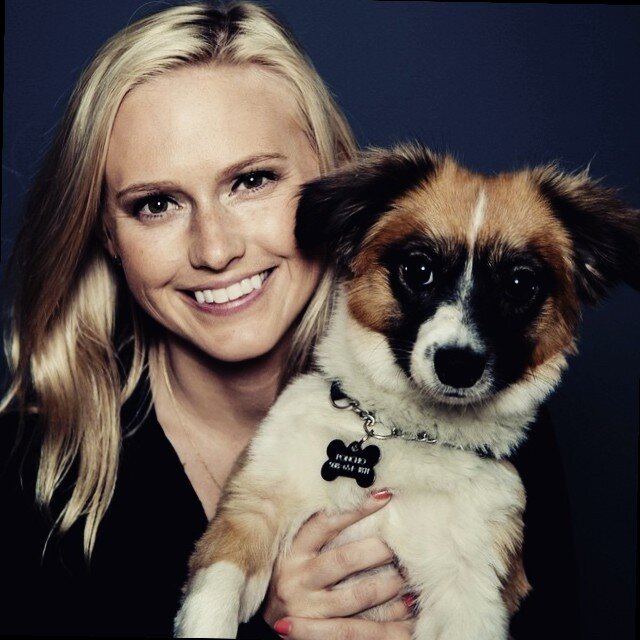Better UX Research Through Body Language
Your body language is just as important as the questions you ask

 Body language is a very important concept in our everyday lives. It affects work meetings, romantic relationships, friendships, and how we engage with complete strangers. For something so present, and very natural for us, it is also extremely unconscious. We show our thoughts, feelings, and perceptions through body language all the time, but we are often unaware of how people perceive our body language. The impact can be huge, from settling down a confrontational meeting, to inflating your sense of confidence, to degrading a complete stranger.
Body language is a very important concept in our everyday lives. It affects work meetings, romantic relationships, friendships, and how we engage with complete strangers. For something so present, and very natural for us, it is also extremely unconscious. We show our thoughts, feelings, and perceptions through body language all the time, but we are often unaware of how people perceive our body language. The impact can be huge, from settling down a confrontational meeting, to inflating your sense of confidence, to degrading a complete stranger.
When you conduct in-person user research, there are a lot of moving pieces to juggle: You are meeting a (potential) complete stranger in an environment that is new to you and/or to the participant, and the interview is likely taking place in a work setting, which can feel uninviting. A host of factors play into how a participant responds within this setting.
A huge part of user research is making the participant feel as comfortable as possible in the above scenario, so they are able to share honest feedback as candidly and openly as possible. This feedback may not necessarily be easy to share, whether it includes personal stories or they are giving negative feedback that puts themselves in a negative light. The key question is, how quickly can you get to this relationship? If you only have 60 minutes (or less) with a participant, it is essential to make them feel as comfortable as possible, as quickly as possible.
How can researchers change their body language?
There are a handful of common nonverbal communication techniques you can employ in order to make yourself, as a researcher, look more friendly, engaged, and interested, and in turn make your participants feel more comfortable with you. (Bonus: This also works with colleagues, partners, and friends!) Pro tip: It can be easy to forget these “common sense” techniques in the process of research, so I keep a small checklist I look over before the participant enters.
- Make sure you are sitting at the same level as the participant. This means your chairs are at the same level, you are eye-to-eye, and you are never standing over someone. When possible, sit next to the participant, as opposed to across from them, since it will feel more like you are peers and less like an interrogation.
- Try to take up as little physical space as possible, as you want the participant to feel like the most important person in the room. This means putting your legs together and physically making yourself feel smaller. Leaning forward helps with this, as you are less likely to be splayed about and will appear more compact.
- Try to dress similarly or in a relatable way to the interviewee. This isn’t always possible, as you can’t predict what participants might wear, but do your best. At times, this has meant walking into a more formal office with casual attire on, since I knew the participants would be more likely to show up in jeans and a T-shirt rather than a suit.
- When speaking to a participant, make sure you are slightly leaning forward. With this position, you are less likely to cross your arms, which can be a sign of withdrawal and disinterest. Instead, by leaning forward, you are showing the participant you are intrigued by what they have to say and your attention is focused on them.
- It is important to nod a lot, or show micro-expressions that indicate you are not only listening, but also understanding what the participant is saying to you. I will occasionally sprinkle their monologues with “mmhmm” or “okay” or “oh yeah.” People get uncomfortable when they go a while speaking without any confirmation that the other side is still with them. This is especially important on a remote phone or video call.
- Always make sure the participant knows what the research session will be like. This includes explaining the setup, how long the session will be, what they can expect (I always say it will be a conversation on X topic), and what you want out of it. This way they aren’t walking completely blindly into a situation and can mentally prepare themselves for the upcoming session.
- Be careful of too much eye contact — it is important to make the participant feel like you are paying attention by maintaining a gaze, but that doesn’t mean intently staring into their eyes. Who wants to be stared at?
- Pay attention to the tone of your voice. Often, a researcher can sound aggressive or intense when asking questions, without intending to be. I try to speak in a higher and softer pitch to make the questions sound more conversational, and less like an interrogation.
- Please please please, always put phones, computers, watches, Kindles (I’ve seen it happen), and any other electronic device away. One surefire way to make a participant feel uncomfortable and unheard is the constant pinging or checking of notifications. This means everyone in the room besides the notetaker — and make sure you deliberately share that there will be a notetaker who is taking down only confidential notes.
More advanced techniques and frameworks
The ideas stated above are fairly well known, so I wanted to share some more advanced ideas I have formulated or heard of over the years. These concepts are a bit more thought provoking and take more effort to utilize.
Where is the research taking place?
Are you bringing the participant into your environment, or are you entering the participant’s environment? This will dictate who the host is and who the guest is, which will help determine how to behave in either setting. If you are hosting the participant in your space, whether that be an office or a research lab, it is your job to welcome them into your space as if they were a guest at a dinner party. They probably aren’t sure where to go or what to expect, so common direction and explanations, such as where the bathroom is located, asking them if they want any water, and making sure you collect them from the lobby on time, will make them feel more comfortable in a foreign environment.
On the flip side, as a guest in a participant’s environment, you can take a more flexible approach. There might be phones ringing during the research session, they may be running late, or people may walk into the office space by mistake, so keeping an open mind with a lot of smiling and appreciative statements is key. Also, always say yes to water if someone offers; it makes them feel more helpful!
Get into character
I have my user researcher character I take on, similar to an actress in a play. My user research character is very positive and optimistic, constantly smiling and thanking people. When in character, you let go of your day-to-day stress and problems and the fact that you spilled coffee all over yourself while walking your dog early that morning. Instead, you take a deep breath, put on your user research mask, and adopt the researcher attitude of being curious, interested, and invested in your participant.
Make the participant feel more important
This has to do with status and the hierarchy of the relationship. Generally, you do want to lower your status in a research interview, and you can do this by lowering your chair slightly, taking up less space, and boosting the participant’s status with statements like “I’m super excited to talk to you; we couldn’t do this without you.”
There are, occasionally, certain situations that may require you to heighten your status. If I am speaking with a scientist about a complex product or concept, let’s say, I might level-up my status, so I seem smarter and worth talking to, like I can understand them. I could do this by taking up more space or speaking more loudly. Keep status in mind, especially when you sense the participant is uncomfortable.
Downplay the prototype
A great way to get honest and open feedback is to downplay and lower the status of the prototype being tested, so the participant feels as though they can discuss and criticize what is in front of them. If they feel like the design or experience is not set in stone, they are more likely to give constructive feedback. If the prototype is presented as a finished product, people will be less likely to give their opinions on how to improve it.
Always be aware of how the participant is feeling
If something isn’t working, be flexible and try to troubleshoot the situation. Maybe you are lowering your status too much, which is actually making the participant uncomfortable. Be willing to adjust as you go to make the research session even better.
One last tip for participant comfort
Body language aside, the biggest mistake I have seen that makes the participant uncomfortable is poor room setup. Always ensure the room is as minimal as possible, meaning there isn’t a lot of visible stuff in the room. If you are recording, make sure the camera isn’t directly in the participant’s face or looming over them. When colleagues want to participate in watching the research, I make sure to have them dial in, as opposed to having many people in the room, and I always keep the list of people dialing into the video conference hidden — there is no point in the participant knowing there are 15 people watching their every move.
 How do you figure out what you are or aren’t doing well? Watch yourself in interviews. You might hate it, but this will help you realize what you’re missing and how to improve these techniques. Another great way is to coach junior or non-researchers. The more you teach something, the easier it is to do it yourself! Watch and learn.
How do you figure out what you are or aren’t doing well? Watch yourself in interviews. You might hate it, but this will help you realize what you’re missing and how to improve these techniques. Another great way is to coach junior or non-researchers. The more you teach something, the easier it is to do it yourself! Watch and learn.
